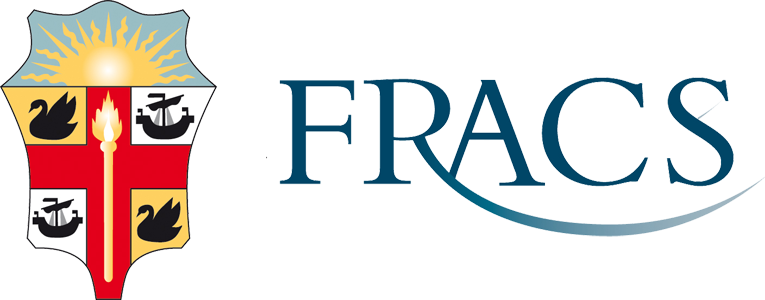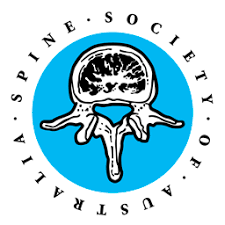Posterior Lumbar Fusion
What is Posterior Lumbar Fusion?
Posterior Lumbar Fusion (PLF) is a surgical procedure performed on the lower (lumbar) spine to fuse two or more vertebrae together. The purpose of the fusion is to prevent movement between the vertebrae, relieving the patient's pain or correcting an underlying spine disorder. The "posterior" aspect of the name refers to the procedure being performed through the back (posterior) side of the body.
Who is Suitable for Posterior Lumbar Fusion?
A candidate for Posterior Lumbar Fusion typically has severe, debilitating pain or instability in the lower back that hasn't responded to more conservative treatment methods like physical therapy, pain medications, or injections. Some specific conditions that might be treated with PLF include:
- Spondylolisthesis: This is a condition where one vertebra slips forward over the one below it.
- Degenerative disc disease involves the breakdown of intervertebral discs, which can lead to painful bone-on-bone contact.
- Spinal stenosis refers to the spinal canal narrowing that can pressure the nerves.
- Scoliosis or kyphosis: These are types of spinal deformities.
- Spinal fractures or tumours: A fusion may be performed to stabilise the spine after removing a tumour or to allow a fracture to heal.
The decision to proceed with lumbar fusion surgery is typically made after careful consideration of the patient's overall health, the specifics of their condition, and the potential benefits and risks of the surgery. It's often considered a last resort when other treatments have failed to provide relief.
Benefits of Posterior Lumbar Fusion
- Pain relief: By eliminating movement in the affected vertebrae, PLF can alleviate pain resulting from degenerative disc disease or spondylolisthesis.
- Increased stability: PLF can provide increased spinal stability for individuals with spinal instability due to conditions like fractures or severe scoliosis.
- Improved quality of life: With successful surgery and appropriate recovery, individuals may return to normal daily activities with less pain and discomfort.
- Correction of spinal deformity: In cases of significant spinal deformities such as severe scoliosis or kyphosis, PLF can help to correct the curvature and restore normal spinal alignment.
Types of Posterior Lumbar Fusion
- Posterolateral Fusion (PLF): In this technique, the bone graft is placed in the posterolateral portion of the spine, between the transverse processes of the vertebrae. Over time, this graft material fuses the vertebrae together.
- Posterior Lumbar Interbody Fusion (PLIF): In this approach, the disc space is accessed from the back of the spine, and the intervertebral disc is removed. The space is then filled with bone graft material, and additional graft material is placed in the posterolateral region.
- Transforaminal Lumbar Interbody Fusion (TLIF): This is a variant of PLIF where one side of the foramen is also removed to gain access to the disc space.
Alternative Options to Posterior Lumbar Fusion
There are several alternative options to Posterior Lumbar Fusion. These options may be explored based on the individual's condition, the location of the problem, and their overall health:
- Non-surgical treatments
- Anterior Lumbar Interbody Fusion (ALIF)
- Lateral Lumbar Interbody Fusion (LLIF)
- Artificial disc replacement
- Minimally invasive spine surgery (MISS)
- Decompression surgery
What to do Before a Posterior Lumbar Fusion?
Tell Prof Malham about any medical conditions or previous operations. Suppose you have a medical condition such as diabetes, heart problems, high blood pressure or asthma. In that case, Prof Malham may arrange for a specialist physician to see you for a pre-operative assessment and medical care following the neurosurgery.
Inform Prof Malham of the medication you are taking and/or have allergies to medications. You must stop using the following ten days pre-operatively:
- Aspirin
- Plavix
- Isocover
- Asasantin
You must stop using blood thinning medication (such as Warfarin) 3-5 days pre-operatively.
Posterior Lumbar Fusion Procedure
Here's a general outline of what happens during a Posterior Lumbar Fusion.
- Anaesthesia: The procedure is performed under general anaesthesia, so you will be asleep and won't feel pain.
- Incision: The surgeon makes an incision in your lower back over the area to be treated.
- Preparation: The muscles are moved to the side to expose the spine. The affected disc may be partially or completely removed depending on the technique used.
- Bone Graft: The surgeon places bone graft material between the vertebrae. This material may come from your own body (autograft), from a donor (allograft), or it could be a synthetic bone substitute.
- Stabilisation: The surgeon may use screws, rods, or plates to stabilise the spine while the bone graft heals and fusion occurs. This hardware is typically left in place permanently.
- Closure: The incision is closed with stitches or staples.
What to Expect After a Posterior Lumbar Fusion?
After a Posterior Lumbar Fusion, you'll likely stay in the hospital for observation and initial recovery for a few days. Here's what you might expect during this period:
- Pain Management: It's normal to experience pain and discomfort after the procedure. Your medical team will manage this with medications. Over time, as you heal, the surgical pain should decrease.
- Physical Activity: You'll be encouraged to move as soon as possible after surgery. Early movement helps prevent blood clots and can speed up your recovery.
- Physical Therapy: You'll likely start physical therapy while still in the hospital. The physical therapist will guide you on how to move safely, get out of bed or a chair and may provide exercises to strengthen your back and improve flexibility.
- Follow-up Appointments: You'll have follow-up appointments with your surgeon to monitor your recovery. During these appointments, your surgeon will check your incision site, assess your pain level and overall recovery, and adjust your treatment plan.
Posterior Lumbar Fusion Prognosis
Most patients see improvement in their symptoms after surgery, but it can take several months for the full benefit to be realised as the bone graft takes time to heal and fuse.
While the fusion process can help alleviate the root cause of the pain, it may not eliminate all pain. Some patients might still experience residual pain after the procedure. Therefore, a comprehensive postoperative rehabilitation program is essential to maximise the benefits of surgery.
Posterior Lumbar Fusion Risks
Like all surgical procedures, Posterior Lumbar Fusion carries some risks, including:
- Infection: As with any surgery, there is a risk of infection. Antibiotics are often given to help minimise this risk.
- Bleeding: There is a risk of bleeding during and after surgery. In some cases, a blood transfusion may be needed.
- Nerve damage: While rare, there's a chance of nerve damage during the surgery, which could lead to pain, weakness, or loss of sensation.
- Nonunion (Failed Fusion): There's a chance that the vertebrae won't fuse properly, a situation known as nonunion or pseudarthrosis. This might require additional surgery.
- Hardware Failure: The screws, rods, or plates used to stabilise the spine could break or become dislodged, requiring another surgery.
- Adjacent Segment Disease: Fusion of one section of the spine can put additional stress on the segments above and below it, potentially leading to degeneration in those areas over time.
What if Posterior Lumbar Fusion is Delayed?
For some patients, delaying the procedure might lead to worsening symptoms, increased pain, or further spine degeneration.
In some cases, such as severe spinal instability, delaying surgery could lead to more serious complications, such as nerve damage or paralysis. However, in other cases, especially where conservative treatments haven't been fully explored, waiting and trying other non-surgical options might not have any serious drawbacks.



